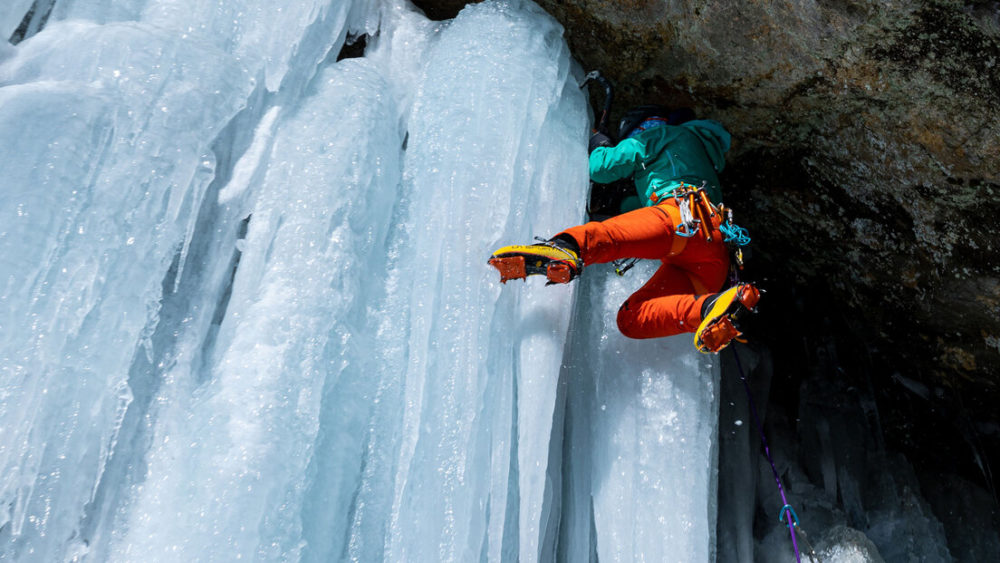 Three-Position Ice Tools
Three-Position Ice Tools
My goal for this project is to design and manufacture a pair of ice tools for use in both competitive and natural settings. I’m hoping to make a tool that is optimized for the technical movement of competitions, has three positions for optimal movement, and yet can still be swung into ice.
Currently, no tool like this exists, the pick angle math just doesn’t line up to allow for all three of the above considerations. However, I think I have a design trick to make it work.
Aesthetics
When making a pair of ice tools, and they don’t need to conform to the practical desire to be understated and minimal. I certainly want them to be functional, but I think there’s room to make them a bit sculptural as well, and there’s no use in trying not to stick out if you’re waving around two axes and have metal spikes all over your feet. If all goes well the end result will have industrial elements from its construction but be a flamboyant, sculptural artifact with maximalist and retrofuturistic aesthetics.
Form Follows Function
The primary challenge is to create a design that is optimized for use in competition but is still usable in real ice. Currently, the vast majority of ice tools are separated to either be competition tools or outdoor tools, there are also a few that attempt to bridge the gap, making concessions for each discipline.
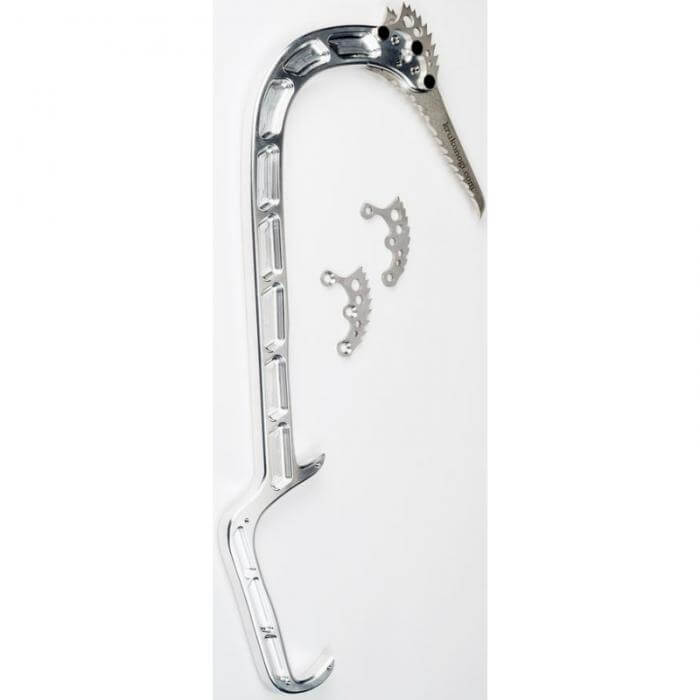 This is the Krukenogi Svarog, a pure competition tool. Its very steep pick angle means that it remains steady even on extremely small or flat holds and at high angles on extended technical moves. However, the angle is so steep that it cannot be swung into ice and therefore cannot be used for outdoor ice climbing.
This is the Krukenogi Svarog, a pure competition tool. Its very steep pick angle means that it remains steady even on extremely small or flat holds and at high angles on extended technical moves. However, the angle is so steep that it cannot be swung into ice and therefore cannot be used for outdoor ice climbing.
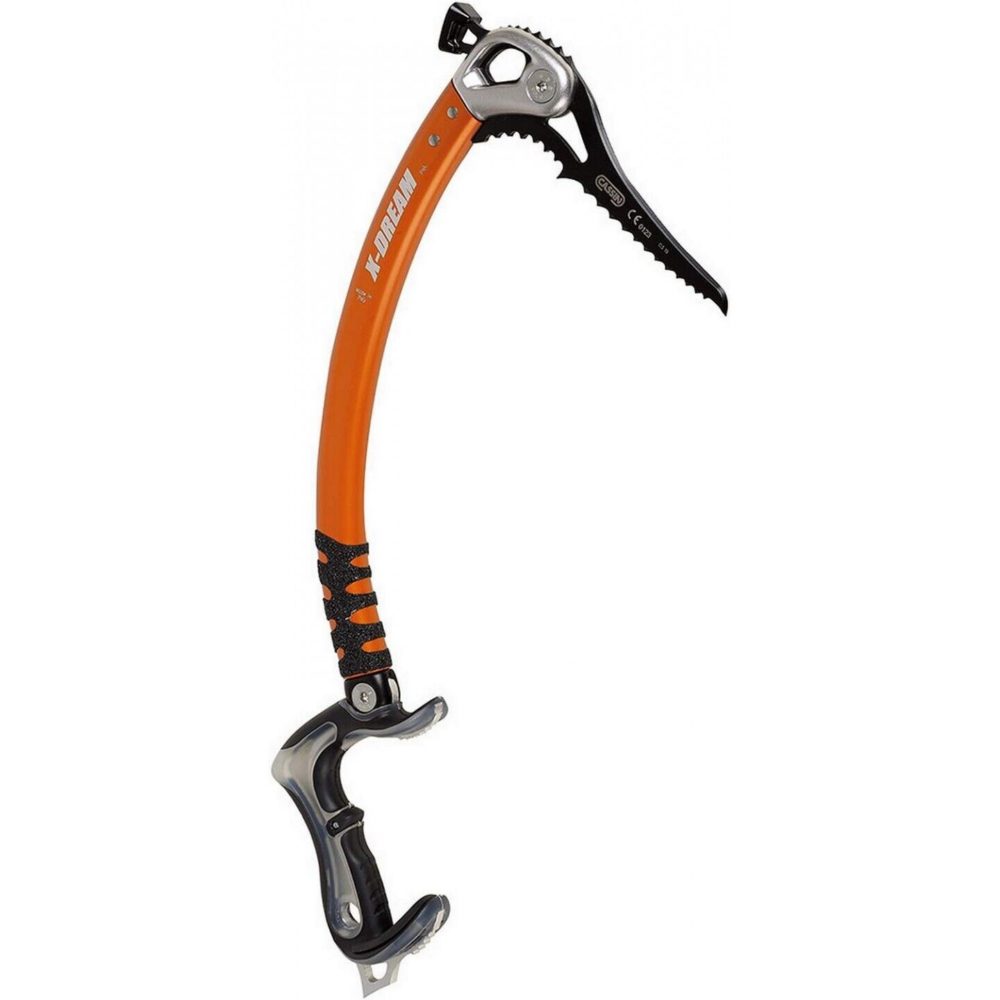
This is the Cassin X-Dream, the most common bridge between competition and outdoor ice tools (also known as a mixed tool). It has a much more moderate pick angle meaning that it can be used in ice, at the cost of being somewhat unsteady in highly technical movement. Additionally, it has a much more constrained handle layout, supporting only two fixed-hand positions, limiting options for moves requiring highly precise body tension and positioning.
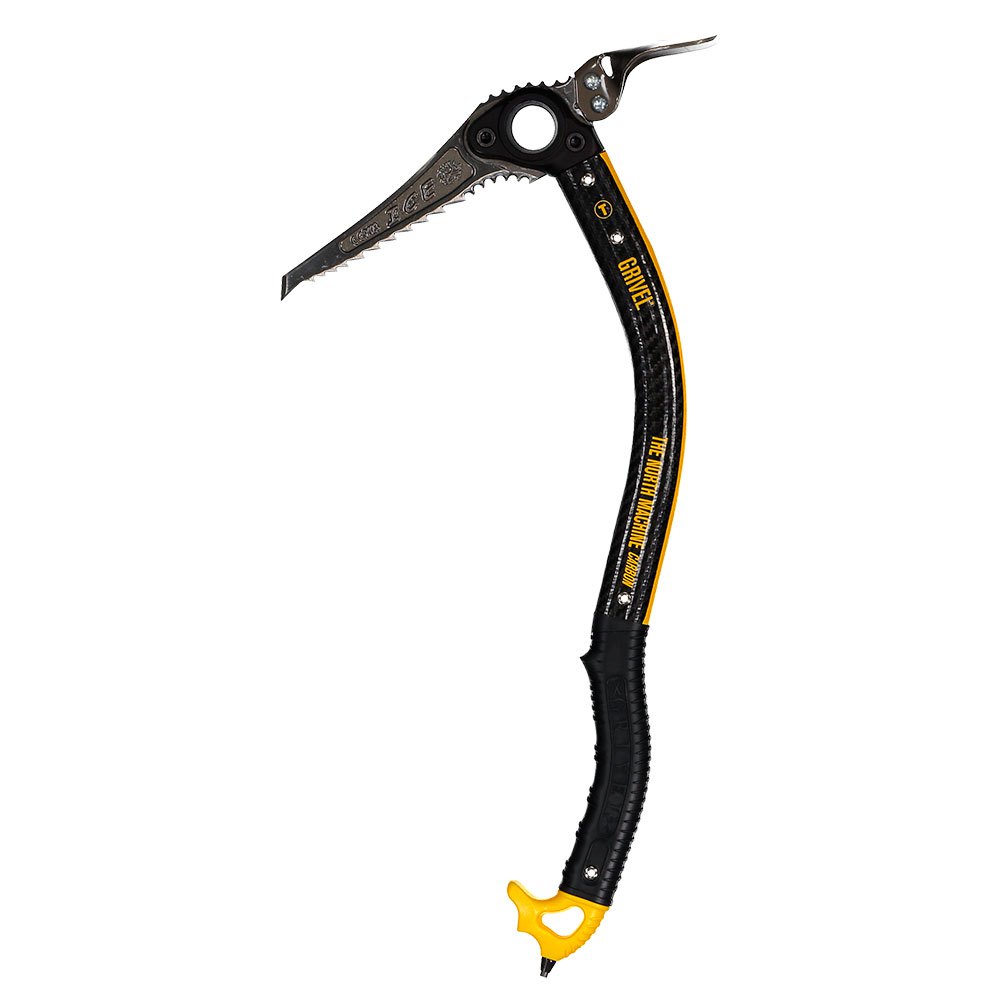
Lastly, this is the Grivel Machine, a purely outdoor ice tool used primarily for mountaineering. It has some pretty sweet features from having a weighted head for a better swing to having a full carbon fiber shaft so that it doesn’t conduct heat and freeze your hands. However, the very high pick angle and the total lack of choils (the little curvy bits that you rest your pinkies on) make it unusable in a technical, competitive environment.
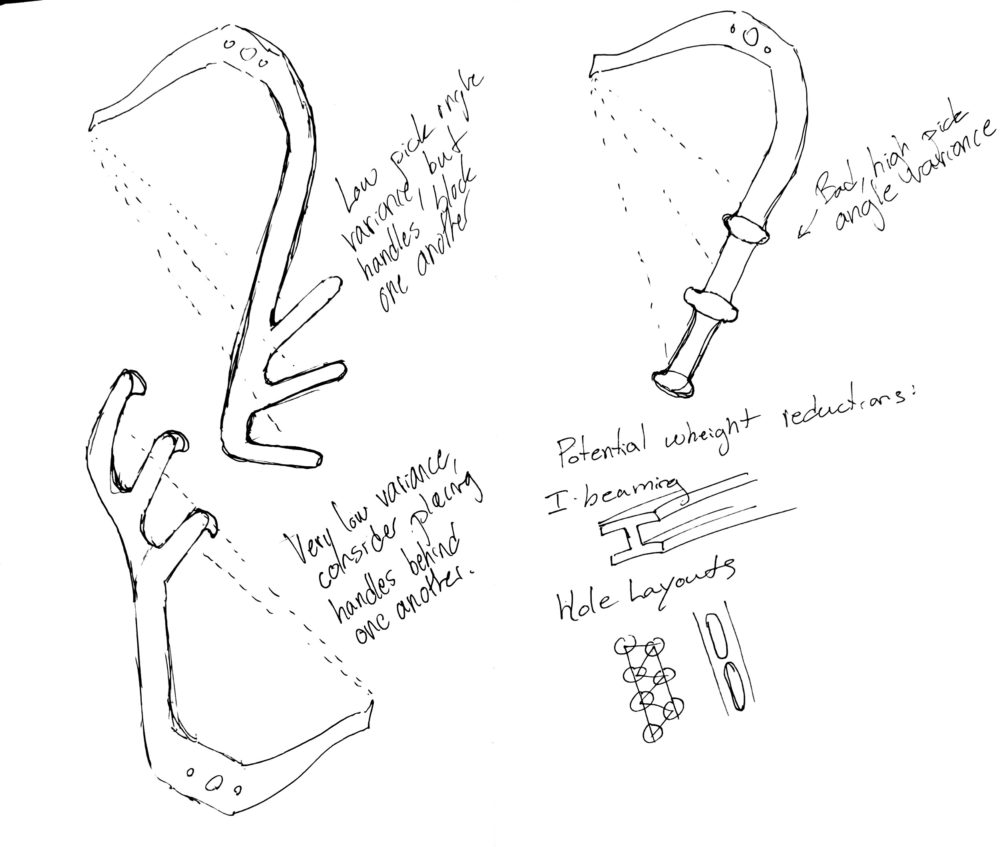 Ideation and Goals
Ideation and Goals
For our design, we want all of the technical capacity of the Svarog without sacrificing its use in real ice. To achieve this, there are two primary things to design around on top of just being a functional ice tool.
-
Three separate hand positions
- The best and most advanced competition-style dry tools have three hand positions. This is because highly technical routes require you to frequently put both hands on the same tool in order to swap hands or hand positions. This is achievable with only two hand positions, but for any given move you are locked into the positioning in which you initiate the move. The addition of the third handle allows you to essentially play three-card-monte, moving either hand to any position at any time.
-
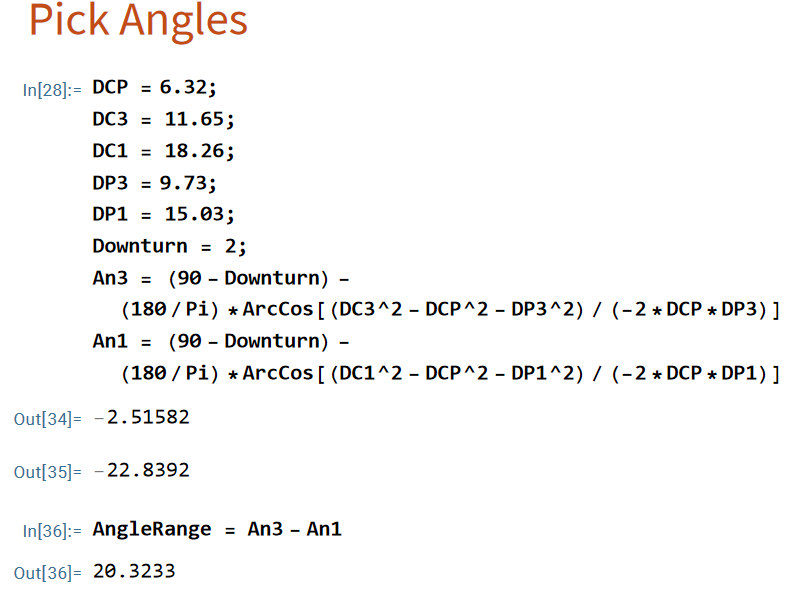 Narrow pick angle profile
Narrow pick angle profile- Ice picks are sharp, but in order to stay on a hold or in the ice, they have to be pointing downward. This might seem like a trivial thing to achieve, but it’s by far the most challenging design puzzle because if the angle is too shallow, the pick won’t stay on small holds, but if the angle is too steep you would just be swinging the blunt top of the pick into the ice instead of the sharp point. Moreover, each distinct hand position has a different pick angle, and they can’t all be in the same location, which makes the pick angle variance for three-position tools very high.
Constraints and Considerations
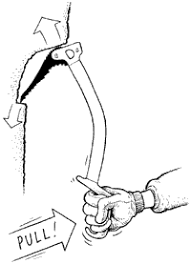
-
Strength
- Ice tools undergo huge strain. Of course, when you’re hanging most of your body weight off of a blade there are significant forces involved, but modern technical dry-tooling multiplies these forces by orders of magnitude when introducing camming or steining techniques.
- A ‘stein’ is a move that involves inverting the tool and camming the pick under a chunk of rock, ice, or plastic. The torque involved is massive and I’ve seen it snap a 3/16ths chromoly steel ice pick.
-
Size
- The UIAA, the governing body for competitive ice climbing, requires that all tools fit within a 50 x 30 x 6.5 cm box and have no mechanical attachment to the hand.
-
Weight
- There is no strict rule about how heavy or light a tool has to be, but you have to be able to hold two of them above your head for many minutes at a time. Good ice tool technique involves primarily your wrist, they can’t be so heavy that they are a burden to swing.
Progress Report
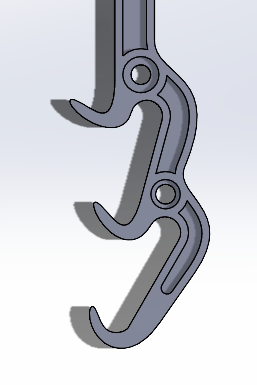
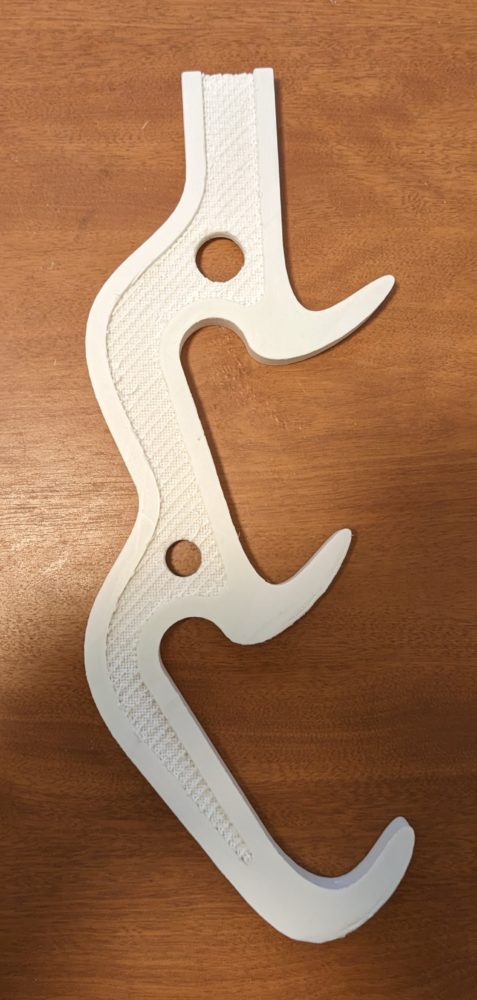
At the start of this post, I said I had a trick to make a technical, three-position tool that can still be swung into ice, and here it is.
For our tool, we’re going to compress the handle layout and thus reduce the pick angle variance by stacking the handles and recessing them behind one another. With low enough variance, we should be able to simply swap out the pre-manufactured picks for different angles allowing for different functions.

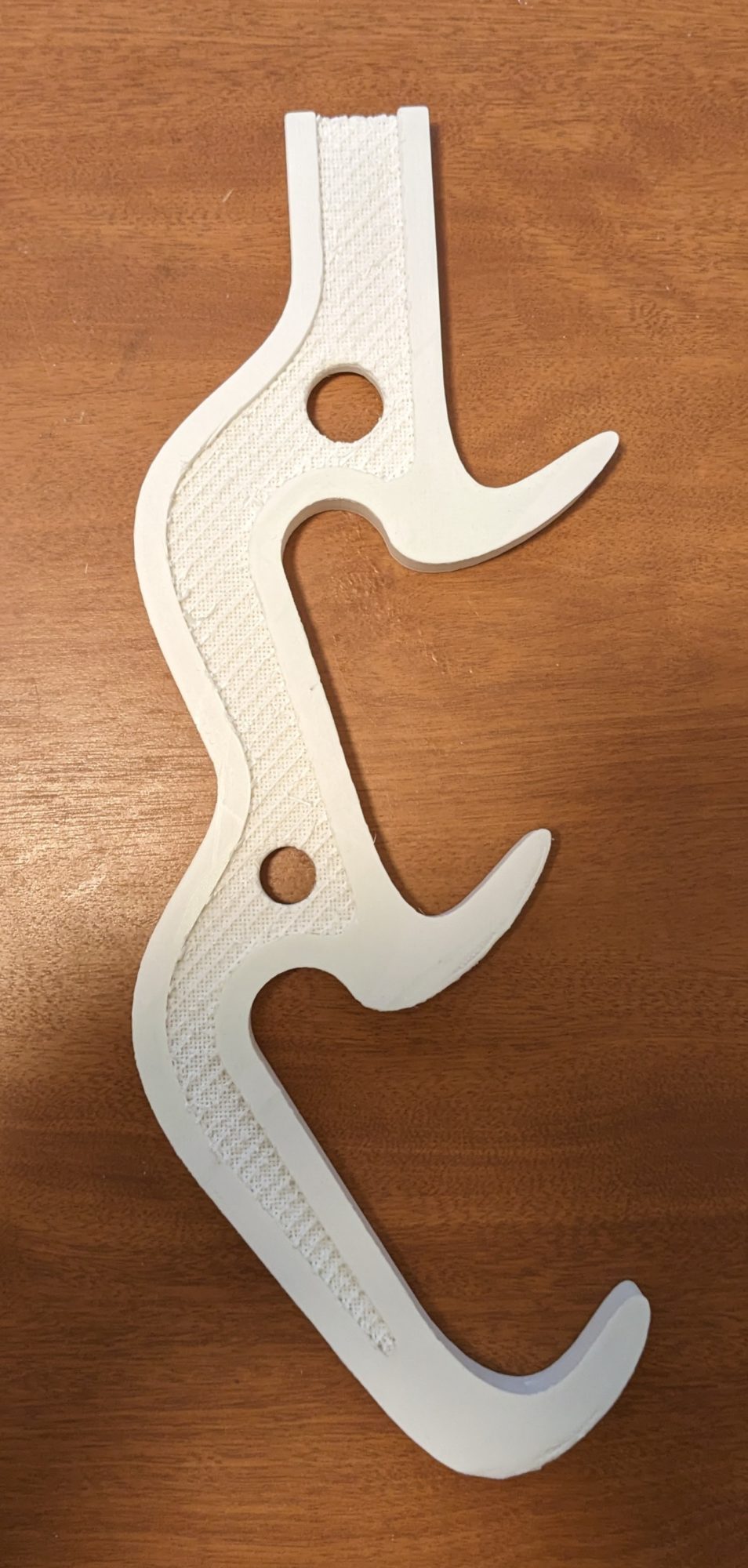
3 Comments. Leave new
I really enjoyed walking through your design process with us; it is really cool to see how the final design evolved! I like how there are design elements/ considerations taken from all of the ice axes you referenced. I’m interested to see how much changing the pick will effect the pick angle for each position. I can’t wait to see these in action!
This is very solid work!! I love how its very thought out with math and science to back that. The angle profiles necessary and the CAD design with the actual prototype on hand is nice to see substance to it!
Since your focus is probably getting a functional ice pick have you thought about the kinds of metal and finishing’s necessary to withstand ice and the weight of the climber? I assume you would want something that wont rust easily and has some waterproof aspect so the constant use in ice and snow conditions doesn’t compromise the integrity of the product.
Keep up the good work!
Great post Aidan, I can tell you have put a lot of effort and thought into how you want this to work out. And the printed prototype looks really promising! If you have narrowed down your design constraints, do you plan this semester to make/machine a version that is strong enough to be usable? Are there already ice picks out there with swappable picks? if not how do you think you will do that and be able to support a persons weight. They look really cool and excited to see how it turns out!